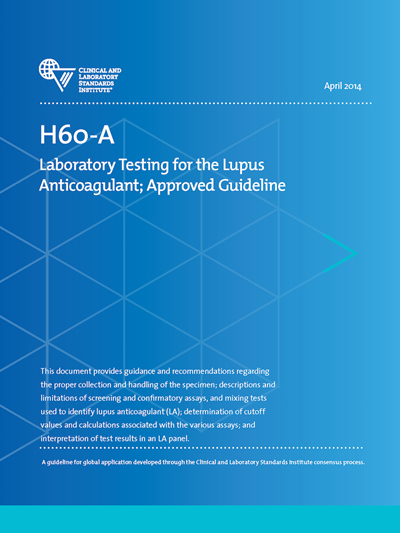CLSI H60
Laboratory Testing for the Lupus Anticoagulant; Approved Guideline, 1st Edition
This document provides guidance and recommendations regarding the proper collection and handling of the specimen; descriptions and limitations of screening and confirmatory assays, and mixing tests used to identify lupus anticoagulant (LA); determination of cutoff values and calculations associated with the various assays; and interpretation of test results in an LA panel.
This document is available in electronic format only.
This reaffirmed document has been reviewed and confirmed as suitable to remain published without revision to content, as of September 2019. The document’s next scheduled review is generally five years after the reaffirmation date.
Member price:
List Price:Details
Chairholder: Marlies Ledford-Kraemer, MBA, BS, MT(ASCP)SH
Date of Publication: April 4, 2014
Order Code PDF: CLSI H60AE
ISBN Number: 1-56238-960-2
Order Code Print: print not available
Edition: First
Pages: 116
CLSI H60 Additional Details
If interested in ordering larger quantities of this document in print, please contact us here.

